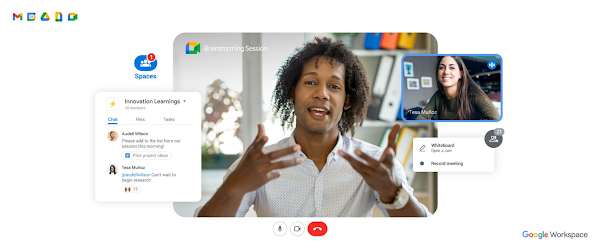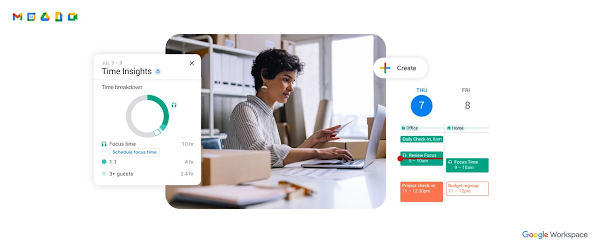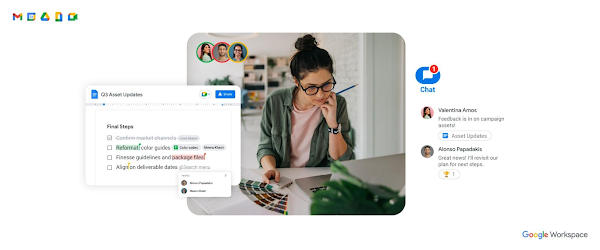
Empowering everyday innovation to build a more adaptive business
Innovation is often associated with big wins: increasing a competitive advantage, developing a new product, or disrupting a category. But these outcomes are almost always enabled by advancements that occur on a smaller scale—in the ways organizations regularly carve out time for creative thinking, experiment with processes, and deploy technology to collaborate.
This approach to innovation frames it as an ongoing exploration of modes of working that make our employees more curious, our jobs more efficient, and our businesses more resilient. When teams are regularly empowered to experiment, the emerging discoveries and productivity gains can help organizations weather unforeseen challenges and uncover new opportunities.
Viewing innovation as a daily practice also reminds us that it’s not a lightning strike. Rather, it’s an organizational habit that we must intentionally develop and cultivate over time.
The right mindset, culture, and tools can help teams—especially distributed teams—reliably produce breakthroughs that advance the business. Equipped with resources that support knowledge-sharing, collaboration, and experimentation, you can build a culture of innovation that empowers your employees to build a more creative, productive workplace for everyone.
Creating an environment where innovation can thrive
At the end of the day, it’s up to each organization to determine how to best adopt innovation as a daily practice. But, as a starting point, there are certain values you can introduce to help you build a culture that champions new approaches to thinking and working.
It starts with creating an atmosphere of psychological safety. In order for employees and teams to take the risks that innovation requires, they must feel comfortable speaking up, asking questions, and making mistakes. Invite people to indulge their curiosity and inquire about what they don’t understand. Acknowledge there will be setbacks as they test out hypotheses, as trial-and-error is often the catalyst for developing new perspectives and processes. And impress upon your teams that failure is not only permitted, but valued, when it leads to learning and new understanding.
Additionally, innovation and inclusivity work together, so invest in leaders and managers who embrace diverse perspectives and listen to their teams. When employees feel heard, they are “3.5 times more likely to contribute to innovation potential.” But listening is just one-half of the equation. Many times, in order for innovative ideas to break through, they also need a little extra push from leadership. As Patricia Satterstrom, Michaela J. Kerrissey, and Julia DiBenigno emphasize in the Harvard Business Review, organizations bolster good ideas by supporting “voice cultivation,” which they define as “the collective, social process through which employees help lower-power team members’ voiced ideas reach implementation.” To help your organization become more innovative, encourage your senior-level employees to amplify their junior colleagues’ contributions.
This idea is related to another driver for fostering innovation across your organization: a willingness to experiment with team structure. While many business operations require hierarchy to function smoothly, some aspects of the creative process, such as ideation, may benefit from a flatter approach. A good idea can come from anyone, so consider creating a cross-functional innovation committee consisting of employees of all levels to lead company-wide brainstorming activities. Or set up “office hours” for junior employees to share their new ideas with senior team members.
Finally, innovation thrives in a connected, collaborative environment. Equip your hybrid workforce with seamless, secure technology and tools that enable them to contribute and collaborate most effectively. Create opportunities, such as team-building exercises, for your employees to deepen relationships with their teammates as well as colleagues outside of their department. After all, the closer you are with someone, the easier it is to exchange and pursue creative or unconventional ideas together.
Putting innovation into practice
Cultivating organizational values like safety, inclusivity, and collaboration is the first step toward building innovation into a daily habit. To strengthen your organization’s innovation muscle, consider the following exercises and tools that can help your teams be more creative every day.
Inhabit a beginner’s mindset. Curiosity is a skill that can be learned, so encourage your employees (and yourself!) to tap into that inner child, embracing the urge to ask “why” or “how”?
Host and facilitate regular brainstorming exercises devoted to innovation. You might devote different sessions to specific topics and open-floor discussions. Virtual tools, like Google Meetfor working in real-time or Spaces for ongoing, staggered conversation, ensure your hybrid workforce can participate from anywhere.
Screen for curiosity in prospective hires, and incorporate a “curiosity filter” in performance reviews. Use Google Forms to create surveys to help hiring teams and department managers assess people’s appetite for curiosity, creativity, and experimentation.
Experiment a little bit each day. In particular, encouraging your employees to use technology in new or expanded ways can empower them to get creative.
Schedule knowledge-sharing sessions or create a chat thread in which employees can exchange tips and best practices for maximizing workplace technology and tools.
Invite employees closest to the business problem to come up with the solution. With AppSheet, your teams can build no-code mobile and desktop apps to automate workflows, promote collaboration, and simplify other workplace tasks.
Encourage your employees to focus on innovation when it’s right for them. This kind of work often requires a mix of quiet, heads-down time for individuals and group collaboration. Since people’s preferences for each type of work may depend on their daily workload and schedule, give your employees flexibility to decide when and how to contribute to innovative efforts.
Encourage your employees to use Google Calendar to block out Focus Time devoted to activities that support innovation, such as trends research or conceptual development.
Help your teams find their preferred tools for individual and collective work as well as same-time and staggered collaboration. Interactive tools like Jamboard and Miro in Google Meet can enhance real-time working sessions. And setting up a dedicated innovation Space lets each person participate on their own time, when it’s best for them.
Adopt an iterative approach. Building a creative culture takes time, and it’s an ongoing, multi-step process — much like creating a new product. First, you implement practices that unleash creativity. Once you’ve surfaced a set of good ideas, you identify the best ones to move into development. Finally, you put those ideas to the test, launching and fine-tuning them based on the available data and user feedback. If they’re working, you refine and scale; if they’re not, it might be time to cut your losses and learn from the failure. The same methodology is applicable to daily innovation. Sometimes a discovery can benefit the whole organization, so periodically examine people’s individual creative pursuits to determine if any of their breakthroughs should become standard practice.
The time is now
Fostering a culture of experimentation and innovation takes hard work, patience, and a vision for the future. It can feel like a momentous undertaking, but our current moment is primed for it. Thanks to the hybrid work revolution, business leaders have an opportunity to reimagine how we work, collaborate, and innovate to build stronger, more adaptive businesses. Over time, the small steps you take to help your organization develop a daily practice of innovation — like championing creativity and welcoming experimentation with everyday processes and tools — can add up to transformative outcomes.

